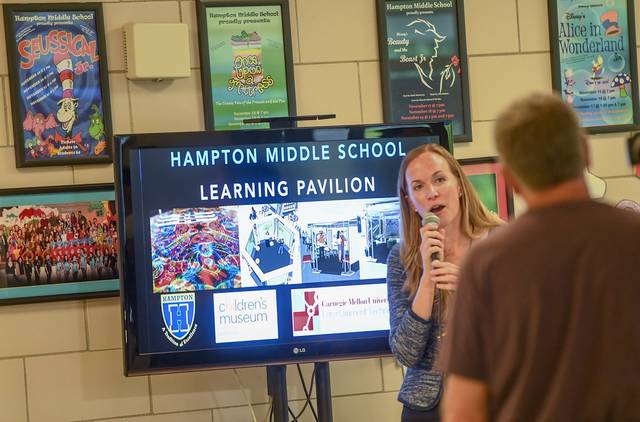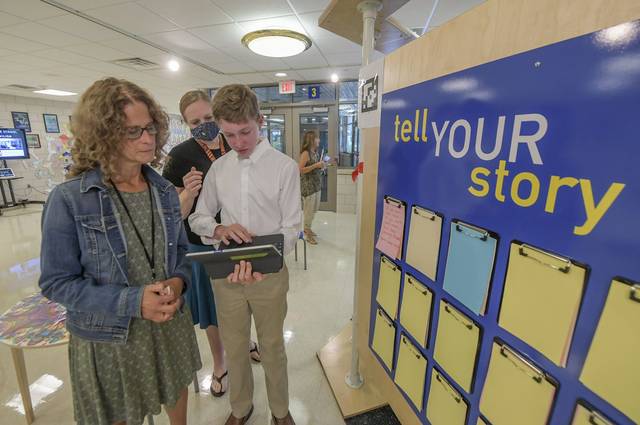Hampton Middle School unveils new interactive Learning Pavilion
Hampton Middle School students will have unique learning opportunities to look forward to when classes return Thursday.
School leaders celebrated the opening of a Learning Pavilion on Aug. 17, one with world maps, augmented reality and story boards for STEAM and other studies.
“The HMS Learning Pavilion provides our students with cross-curricular activities, ones that are both hands-on and engaging,” Principal Marlynn Lux said.
“The pavilion will inspire our students to work collaboratively with one another and think critically about the unique problems presented to them.”
The pavilion was funded by a $20,000 grant from the Hampton Alliance for Educational Excellence (HAEE), $8,000 from the Hampton Middle School PTO and $3,000 from the HMS student council.
It was developed in partnership with The Children’s Museum of Pittsburgh and Carnegie Mellon University.
Lux touted the amenity for what it will offer students, including a weaving wall, chain reaction system and coordinate plane.
“Our Learning Pavilion is very flexible, allowing teachers and students to create new experiences moving forward,” Lux said.
The space will provide learning opportunities for more than 650 middle school students.
A committee of teachers developed the concept over the past 18 months. In addition to Lux, the team was led by Michael Silbaugh, HMS assistant principal; and Anne Fullenkamp, director of design at the Children’s Museum of Pittsburgh.
Project highlights include interactive world maps that allow teachers to demonstrate how historical events impact the world moving forward. The maps bring concepts traditionally taught on paper or laptop screens into a much larger focus, Lux said.
Storyboards enable students to tell stories using magnetic peg boards; chain reaction systems use simple tools to support complex investigations through a collaborative, interactive design process that lets students test ideas quickly.
An augmented reality tool called ARCADE was designed by Carnegie Mellon University’s Entertainment Technology Center and allows students to build interactive narratives and layer educational content to the environment, using iPads and district devices.
School leaders hope to add a hydroponics system and living wall to surround the space.
“I am extremely proud of the HMS Learning Pavilion Committee for working for over 18 months to thoughtfully design an extremely innovative Learning Pavilion for our students,” Lux said.
“This cutting-edge space would not have been possible without the sincere commitment of our funders. We are forever grateful to them for believing in our vision and allowing us to make our dream a reality.”
Tawnya Panizzi is a TribLive reporter. She joined the Trib in 1997. She can be reached at tpanizzi@triblive.com.
Remove the ads from your TribLIVE reading experience but still support the journalists who create the content with TribLIVE Ad-Free.



